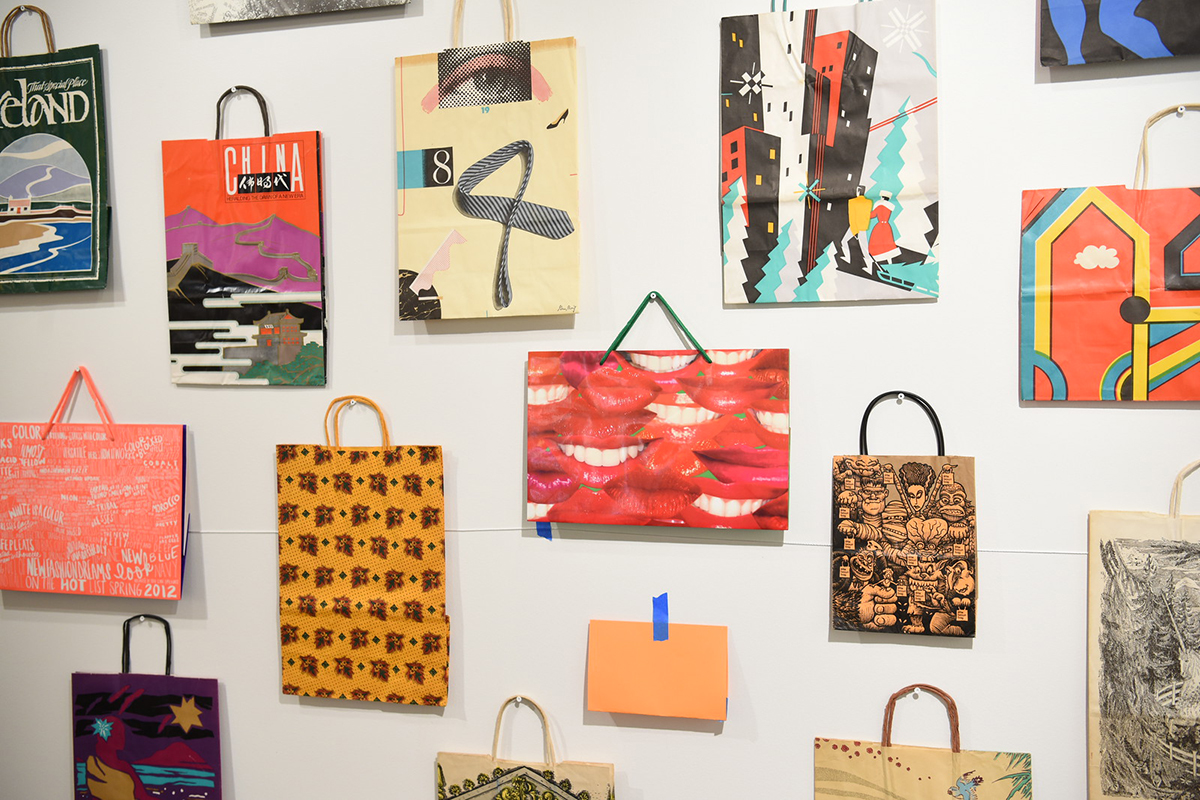Interpreting the human experience at new Institute of Human Science and Culture
What do a Native American headdress, a Valentine’s Day postcard and a Bloomingdale’s shopping bag have in common?
They are all items that can help us interpret the human experience. And they are all on display at The University of Akron in the Drs. Nicholas and Dorothy Cummings Center for the History of Psychology. The center’s renovation is now complete, marked by a grand opening on Saturday, Sept. 14, of its Institute for Human Science and Culture on the top two floors of the building. Hours will be 11 a.m. to 4 p.m.
Ultimately, Native American headdress, postcards and shopping bags help us explore what it means to be human, which is the vision of the Cummings Center. We can ask, “How was the item used? Why was it created? What need did it meet? How did we make it uniquely ours? Why did we collect them in the first place? What will it say about us 100 or 1,000 years from now?”

This Native American Indian headdress from the Four Corners Region is made with turkey feathers. On display in the background are rugs and blankets from the same region, all part of the Oak Native American Ethnographic Collection.
The Institute for Human Science and Culture (IHSC) is located on the second floor of the Cummings Center, with a mission to promote education and research in the history, preservation, documentation and interpretation of the human experience. Items on display include collections of Native American artifacts on loan by Jim and Vanita Oelschlager, the Lee L. Forman Collection of Bags, and the David P. Campbell Postcard Collection.
“This rich variety of collections will be housed at the institute, all providing historical understanding and portrayals of human science and culture,” said Dr. David Baker, executive director of the Cummings Center. “Collections displayed will promote the examination of humanity from multiple perspectives — psychological, anthropological, artistic and historical.”
The two floors of the Institute feature galleries, a library and classrooms. A large storage area with a workshop allows students to handle and catalog items from the various collections.
“The institute is a new adventure in multidisciplinary, hands-on education, centered on cultural artifacts and reaching across disciplines to find the stories that connect us,” explained Dr. Jodi Kearns, director of the institute. “We want to reach out to the widest possible community and student audience, in order to draw in and connect students of all levels and experiences with like-minded learners and mentors.”

A sneak peak of the newest special collection, these artist-commissioned Bloomingdale shopping bags are part of a compilation of over 12,000 bags and bag-related pieces in the Lee L. Forman Collection of Bags.
In addition to sharing collections, the IHSC will offer credit bearing courses to students, including some designed and taught by practitioners, professors and community experts in collaboration with the institute staff and advisory board.
The most distinctive program is the institute’s 18-credit undergraduate certificate in museum and archives studies. Students enrolled in the program have the opportunity to work with experts from a variety of disciplines across UA. They will also get hands-on experience working with the collections at the institute.
All exhibition spaces — galleries and hallways — have ¾-inch fire-treated wall backing, allowing for flexibility of display options while at the same time assuring object safety. Original wood beams from Amish barns add to an open-air aesthetic. The rotating Lynn Rodeman Metzger Galleries are flexible exhibition spaces that allow the institute to partner with the community and UA for a variety of events and displays.
Its centerpiece is the Oak Native American Gallery, the exhibitive home of the Oak Native American Ethnographic Collection. One part of the gallery exhibits materials highly associated to cultural ecology, and the geographic location and resources associated with a region, such as Artic/Subarctic hunting tools, Northwest coast totems and baskets, Great Basin and Southwest baskets and pottery, and blankets. The second part of the exhibit focuses on cultural tools, and items displayed include a large buffalo robe, tomahawks, clubs, lances, arrows, knives and drums.

This student-curated exhibit, How Animal Subjects Shaped Psychology, is on display in the Lynn Rodeman Metzger Galleries on the 4th floor.
“The Oelschlagers hope the exhibition fosters a better understanding of Native American culture,” said Francisca Ugalde, curator at the Institute for Human Science and Culture, a position supported by the Oelschlagers in cooperation with the Lynn Rodeman Metzger Endowed Curatorship in Anthropology. “This exhibition highlights a sample of the collection’s items and it exemplifies how collections can be used for educational purposes to reach wide audiences and to help avoid stereotypes and outdated symbolism.”
The National Museum of Psychology on the first floor and the galleries of the institute on the fourth floor are open to the public Tuesday, Wednesday, Friday and Saturday from 11 a.m. to 4 p.m.; and Thursday from 11 a.m. to 8 p.m. Admission provides access to both floors and is $10 for adults; $5 for children (12 and under); and free for all UA students, faculty and military personnel with a valid ID. The archives are open Monday to Friday, 10 a.m. to 4 p.m. by appointment only.
The center is located at 73 S. College St., in Akron, on the north side of campus. Free parking is available in the parking lot adjacent to the building. Visitors can also park in Lot 30 at the corner of College and Market streets. Metered parking is available along South College Street.
Media contact: Lisa Craig, 330-972-7429 or lmc91@uakron.edu.
